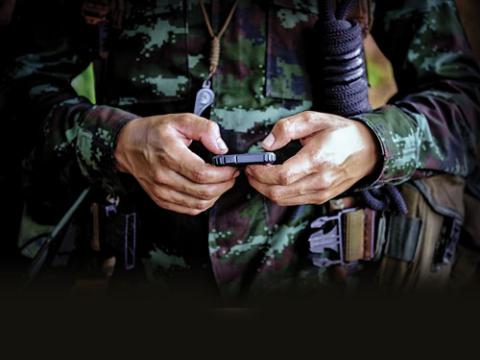Real-Time Emergency Alerts--In Really Real Time
U.S. federal agencies conducting the 2011 test of the Emergency Alert System saw results and failures, and are working to coordinate improved social media connection and involvement.
Given some of the most shocking emergency events of the past decade, whether on school campuses, severe weather conditions, or the overall climate of hyper-awareness in the United States following 9/11, the ability to provide real-time public warnings has become a huge priority. The current Emergency Alert System (EAS), and its predecessor, the Emergency Broadcast System, or EBS, date back to 1951. But present-day capabilities, brought about by advanced satellite and other systems technologies-including the Internet and social media tools-provide the very capabilities necessary to deliver an alert with time enough to spare to enable proactive measures. In this issue of SIGNAL Magazine, Defense Editor Max Cacas focuses on the recent EAS test, its successes, failures, and recommendations for improvement in his article, "Emergency Alert Joins the Twitter Age." In 1997, the Federal Communications Commission (FCC) replaced the EBS with the EAS, which for the first time employed early digital technology to trigger alerts on what was still a network of approximately 20,000 local radio and TV stations, plus participating cable TV systems. The FCC is the lead agency operating the EAS, but the system also is used for other alerts, such as missing children "Amber Alerts" or for missing elderly in the form of "Silver Alerts." The National Weather Service is one of the most prolific users of the EAS as well. But to ensure that the system was "up to snuff" for today's challenges, federal agencies gathered to conduct a test of its capabilities and map out the path for an improved system. Participating were the FCC, in partnership with the Federal Emergency Management Agency (FEMA), a component of the Department of Homeland Security; and the National Oceanic and Atmospheric Administration, part of the Department of Commerce and parent agency for the National Weather Service. This first-ever nationwide test took place on Wednesday, November 9, 2011, at 2:00 p.m. Eastern Standard Time. The goal was simple: to determine what worked and what didn't when an EAS test was sent out across the country. One of those supervising the test at one of the many participating radio stations was Dave Garner, director of engineering for the Washington, D.C., stations of Hubbard Broadcasting. In that role, Garner serves as chief engineer for radio stations WTOP-FM and WFED-AM. He shares his initial observations:
The tones that opened the stations to the message worked fine. The problem was the actual recorded test message was highly distorted, and there was some double audio-almost like an 8-second delay of audio on the message.
Garner also notes that the national EAS test broadcast to his stations was not transmitted to the popular news websites or other on-air media that complement his company's radio programming. That, he notes, points out a critical need in the new social media era that must be addressed. Heading up the FCC effort to develop a next-generation EAS is Jamie Barnett Jr., chief of the commission's Public Safety and Homeland Security Bureau. He says the FCC hopes to address the online shortcomings through an EAS-developed technology called the common alerting protocol, or CAP. If you were part of the EAS test, or were aware of its outcome, what are your opinions about its performance and results? Read the full article and share your opinions and suggestions here.










Comments